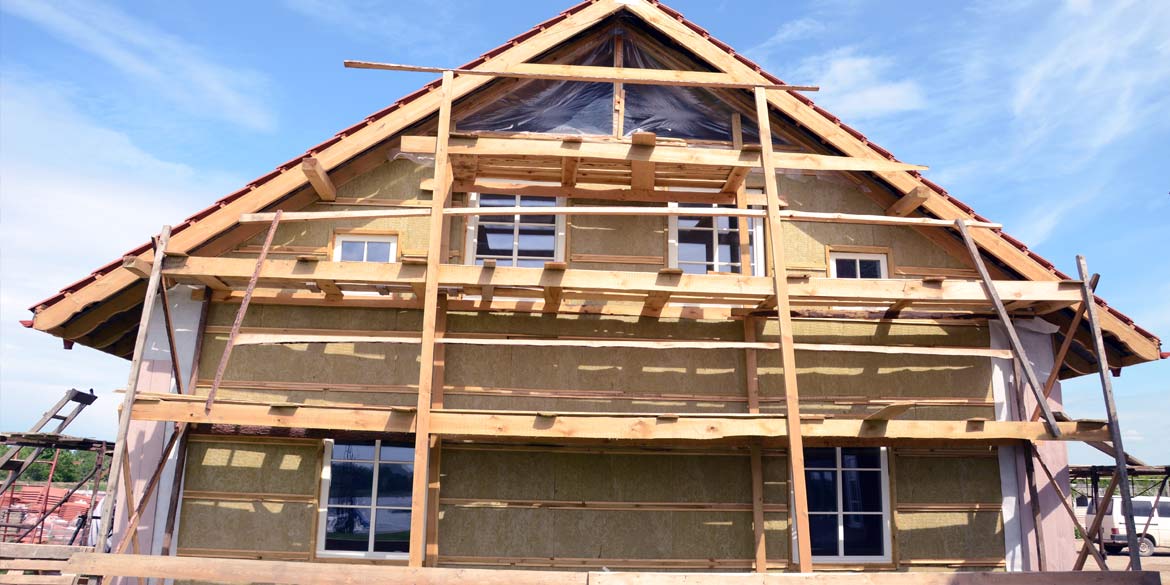
If insurance costs, mortgage availability, and buyer market are deal breakers for you when it comes to buying your next home, read on to make sure you understand what constitutes as a standard and non-standard house purchase in the eyes of lenders and insurance providers for these three reasons:
Rest assured that whatever kind of home you decide to buy, our surveyors are happy to assist you with building surveys, condition reports, and defect analysis for both standard and non-standard construction. They will be able to advise you of the pros and cons of each and have a good understanding of the potential structural and modification issues to be aware of in the kind of property you are purchasing.
Your house will be considered a non standard construction if it is built of anything other than a traditional construction of bricks and mortar (or stone) with a slate or tiled roof. i.e. if your house incorporates frames, modular parts, cob, etc then it will be considered non-standard construction. For more detail on the differences and materials read on …
A standard construction for residential properties is considered to be a dwelling made of bricks and mortar or stone with a slate or tiled roof.
If your house incorporates concrete, timber or steel frames, pre-fabricated or modular parts, shingle roofs, clunch or cob, among other non-standard construction materials, then it is considered to be of non-standard construction.
As with everything in life, the more unique and specialist an item, the more labour intensive and therefore expensive it is to correct issues when something goes wrong. If your home is of non-standard construction, it is likely to need specialist tradespersons and companies to resolve issues when they arise, which is more expensive for the insurer and something they are less likely to take a risk on, thus resulting in higher insurance premiums.
If you have fallen in love with a non-standard construction home, don’t worry though because there are specialist insurers out there who understand your kind of property and the associated risks it can have whilst providing you with the best level of cover. It always pays to look around and select the insurance provider that works best for you and your home, so don’t just stick to the same company you’ve always used when you buy your next home.
As with insurance providers, mortgage lenders are not inclined to take risk. Lending against unique or unusual homes that feature non-standard construction methods and materials brings a higher level of risk to the lender. This risk is a result of them being viewed as harder to sell in the event of repossession, future value is harder to predict and higher rates of repair and maintenance could be needed. All of these factors make a non-standard construction home a less stable investment in the eyes of a lender than a standard property. Because of this, lenders will usually charge a premium or insist certain caveats are met, such as a higher deposit being paid when compared to more mainstream homes and mortgage products.
Saying that, if you’ve fallen in love with a house that is not considered to be standard, never fear because there will always be lenders in the marketplace specialising in non-standard construction mortgage products, so it’s worth doing your research to ensure you get the best deal and provider for you. For particularly unique properties, a mortgage broker might be a good option to explore, as they will have a good knowledge of the market and understand which lenders are best to approach – which could save you time and money.
Below we’ve given an overview of some common non-standard construction materials to explain why they’re categorised in this way.
Steel framed houses are non-standard construction because they’re not very flame resistant and are susceptible to warping which can cause big issues for the rest of the house in the event of a fire. So although an affordable and lightweight option to purchase, steel frame houses are often more costly to insure.
Timber framed properties are becoming more mainstream in popularity but are still viewed as non-standard by insurers due to their susceptibility to fire.
BISF houses are non-standard construction. The British Iron and steel federation (BISF) built around 50,000 steel-framed houses from 1946. Roofing in these properties contain asbestos which is a health risk. This is a common non-standard construction property type.
Prefab/modular houses are non-standard construction. Prefabricated homes are largely built offsite and assembled on the plot being developed. Due to their modular nature, when problems arise, often whole sections of the property’s structure may need to be replaced which is a costly exercise. Concrete homes are non-standard construction and can fall into this bracket too.
Always ensure you’re open and honest with your insurer and finance provider regarding the construction of your home. Failure to disclose key information regarding non-standard construction methods could result in your insurance being void, loan terms breached, and financial losses when it comes to a claim.
…..
Use our contact form to get in touch with our building surveying team to discuss any concerns you have regarding the construction of, condition or viability to develop your home to ensure you make an informed choice when it comes to purchasing your next property.
If you found this article helpful and would like to receive more posts like this directly to your inbox, subscribe to receive our quarterly newsletter or follow us on twitter @KemptonCarr and like us on facebook to see them first.